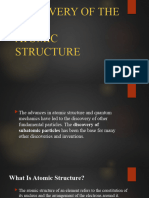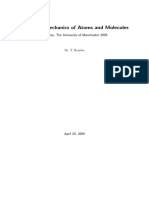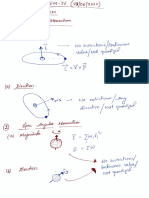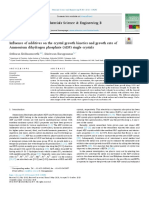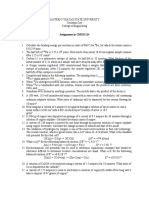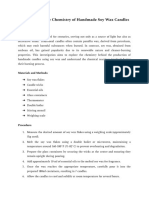0% found this document useful (0 votes)
5 views5 pagesAtomic Structure Notes
The document outlines the evolution of atomic theory from Dalton's indivisible atoms to the modern quantum mechanical model, detailing key discoveries of subatomic particles and the development of various atomic models. It highlights the significance of wave-particle duality, Heisenberg's uncertainty principle, and Schrödinger's wave equation in shaping our understanding of atomic structure and electron behavior. The text emphasizes the impact of these theories on explaining chemical properties and periodic trends in elements.
Uploaded by
priyankasriram13Copyright
© © All Rights Reserved
We take content rights seriously. If you suspect this is your content, claim it here.
Available Formats
Download as DOCX, PDF, TXT or read online on Scribd
0% found this document useful (0 votes)
5 views5 pagesAtomic Structure Notes
The document outlines the evolution of atomic theory from Dalton's indivisible atoms to the modern quantum mechanical model, detailing key discoveries of subatomic particles and the development of various atomic models. It highlights the significance of wave-particle duality, Heisenberg's uncertainty principle, and Schrödinger's wave equation in shaping our understanding of atomic structure and electron behavior. The text emphasizes the impact of these theories on explaining chemical properties and periodic trends in elements.
Uploaded by
priyankasriram13Copyright
© © All Rights Reserved
We take content rights seriously. If you suspect this is your content, claim it here.
Available Formats
Download as DOCX, PDF, TXT or read online on Scribd
/ 5


















